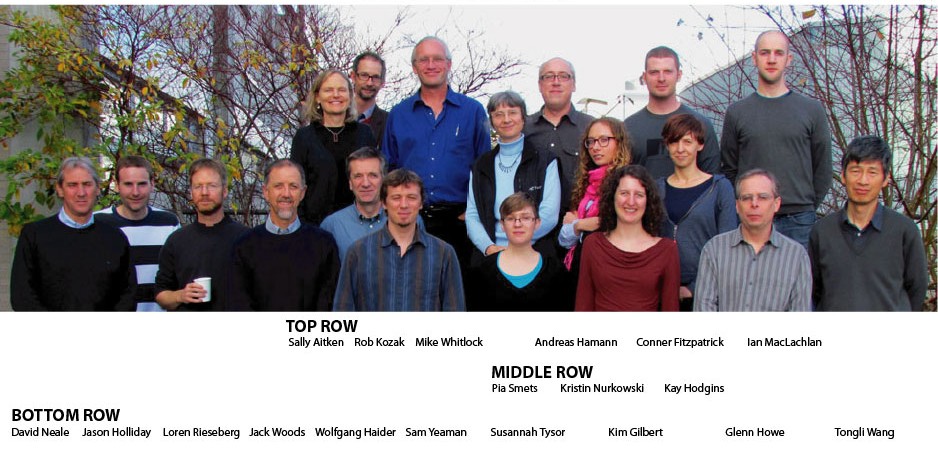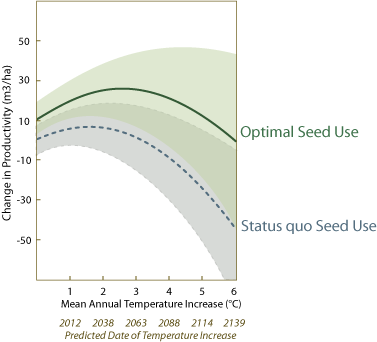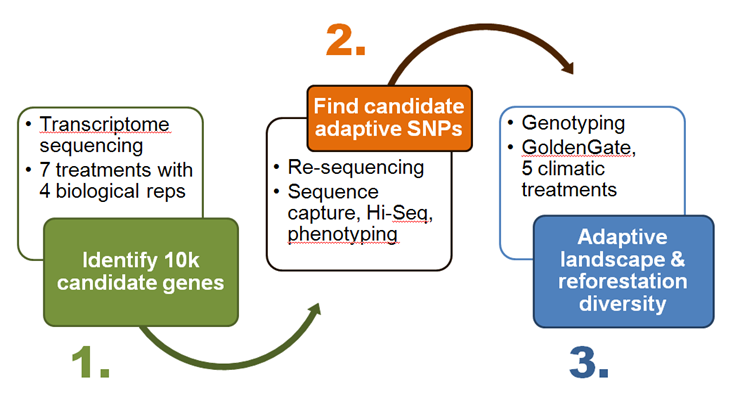An introduction to the AdapTree project for the general public
Motivation
- Forests provide thousands of jobs and billions of dollars worth of employment income, tax revenue, and economic activity to Canadians. In addition, they provide a broad range of ecosystem services including water, recreation, biodiversity, and carbon sequestration.
- All of these benefits depend on healthy forests. Climate change is threatening forest health.Tree populations, adapted to specific climatic areas, are becoming mismatched as climate changes.
- The change is happening too fast for tree populations to adjust through selection of the fittest and migration as they have done over the past millennia.
- In BC and Alberta, about 150 million spruce and lodgepole pine trees are planted annually by forest companies and provincial agencies. Typically, foresters collect and use seed locally for this planting. In the past, the resulting seedlings were well-adapted to the locations in which they were planted. However, a rapidly changing climate threatens forest health and productivity, and is predicted to result in widespread maladaptation of trees.
SOME OF THE RECENT AFFECTS OF CLIMATE CHANGE ON OUR FORESTS
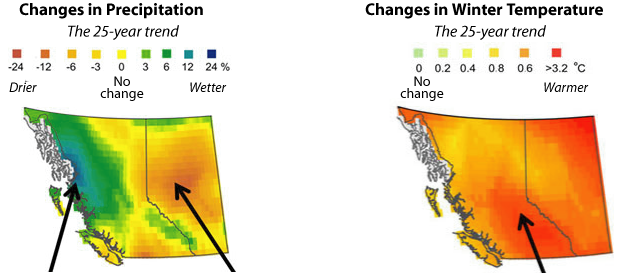
 |
 |
 |
| Dothistroma, a pine needle blight, is causing defoliation, mortality and plantation failures in parts of the province were it was previously rare. | Spruce and aspen dieback, occuring in our interior forests, is partly attributed to the presence of drier conditions resulting from the combination of decreased precipitation and increased temperatures. | The Mountain Pine Beetle epidemic has been exasperated by the occurrence of several consecutive winters with warmer temperatures. |
![]()
![]()
![]()
![]()
|
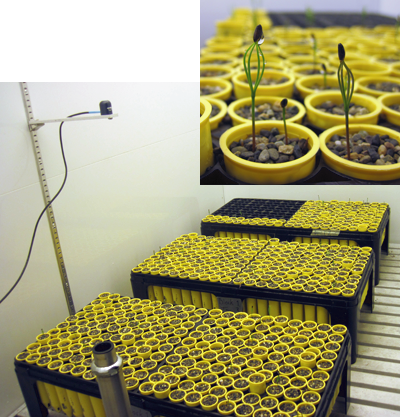 |
 |
|
|---|---|
|
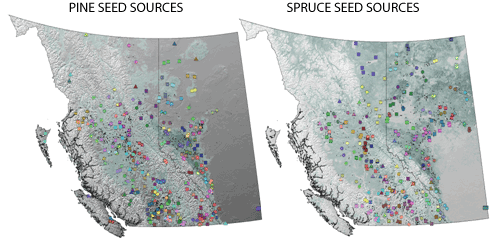 |
 |
|
|---|---|
|
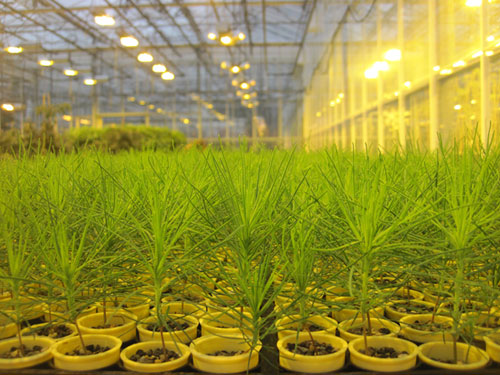 |
| Phenotyping: Large numbers of plants are being phenotyped in six environments including a greenhouse, out door nursery beds, and 4 controlled environment growth chambers. | Observed adaptive traits are: growth, bud break, bud set, cold hardiness, drought hardiness, carbon isotope composition. |
WIDER CONTEXT: Socio-economic research
This research raises a number of community-level economic, social and value-based questions.
- Are rural community residents aware of the local risks of global climate change?
- Are certain forest adaptation strategies more acceptable than others?
- What are the contextual factors and attributes of an adaptation strategy that makes it acceptable or unacceptable?
We will conduct a multiple case study to address the research questions in four communities (two in BC and two in Alberta). Each of the communities will be located in interior spruce or lodgepole pine dominated forest ecosystems. In addition to community-specific contextual research and economic impact modeling, we will conduct focus groups with participants representing the forest industry, government, economic, education, health, social services, First Nations and others. This investigation will be supplemented by a survey of forest-dependent community leaders (Mayors and members of Council) in BC and Alberta.
![]()
WIDER CONTEXT: Policy research
- An in-depth policy analysis will clarify existing policy and possible obstacles to change.
- A better understanding can provide policy makers and the public with the tools to actively participate in decision making.
- We develop realistic and cost-effective strategies for assisted migration of forest trees. Carefully considering uncertainty in climate change projections, and understanding how species populations are genetically adapted to climatic environments are key ingredients.
- The ultimate outcome of this project is policy changes in seed source selection to help mitigate the effects of climate change on our forests.
![]()
SOME MEMBERS OF OUR RESEARCH TEAM
December 2011
